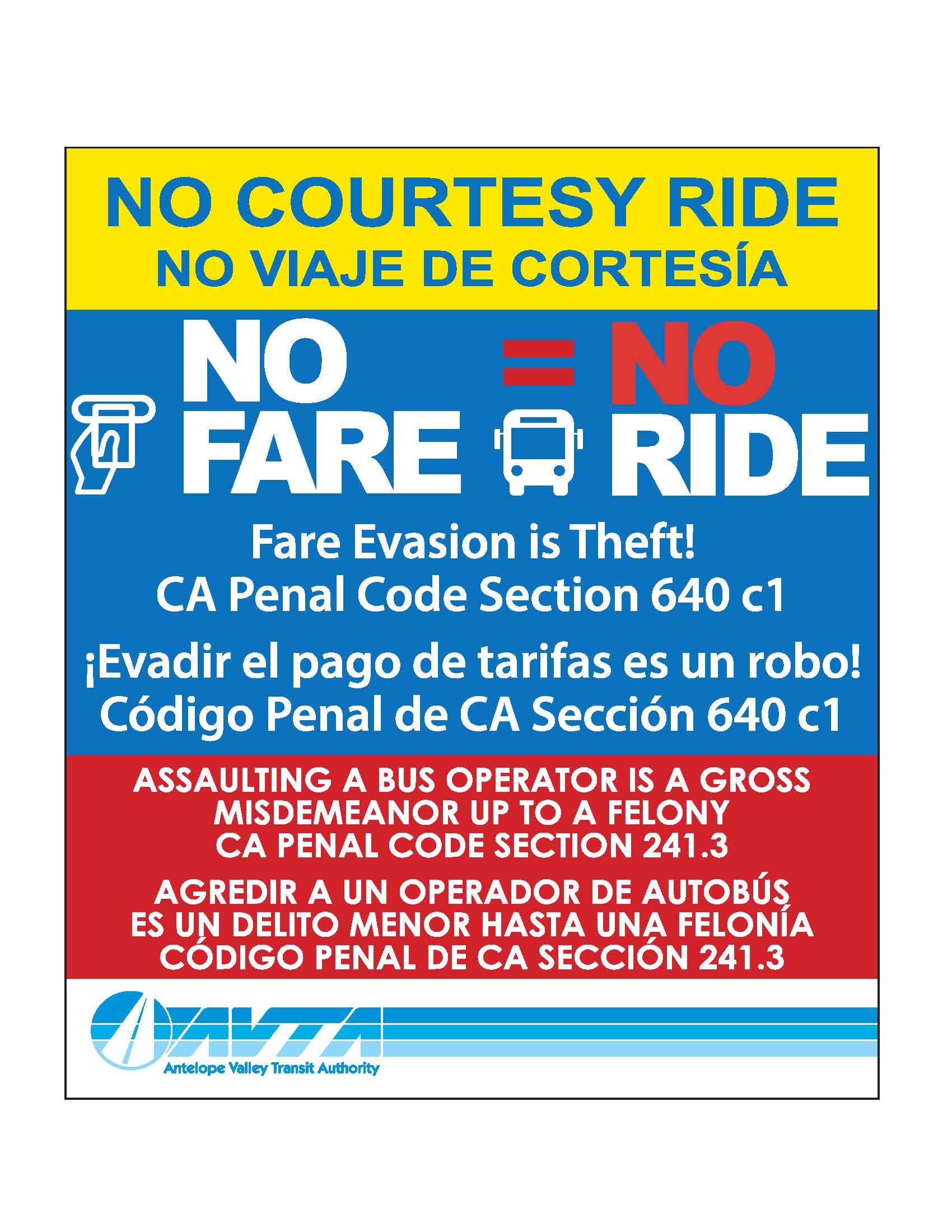AVTA Addresses Growing Financial Impact of Bus Fare Evasion
Lancaster – Antelope Valley Transit Authority is issuing an urgent call to action as bus fare evasion continues to rob vital funding from essential transit services.Fare evasion is theft. In the current fiscal year alone, AVTA estimates it will lose approximately $1.2 million to unpaid fares on AVTA transit services. This is money that could have been invested in increased route frequencies, cleaner buses, enhanced security, route expansion, and greater service reliability for the Antelope Valley community.

“Every fare that goes unpaid robs resources from vulnerable Valley residents such as seniors, veterans, and disabled riders," said AVTA Board Chairman Marvin Crist. "Successful public transportation is built on trust and community responsibility. AVTA does not want to be forced to raise fares. We’re asking every passenger to help keep our transportation services strong by paying the appropriate fare for the service being used.”
New signage has been installed on AVTA vehicles reminding riders that there is no such thing as a “Courtesy Ride” and fare evasion is a violation of California Penal Code Section 640 c1. Violators can be identified by law enforcement using the bus camera system, mobile TAP Card validators to check for activity, and even undercover law enforcement officers. Fines of up to $250 may result from successful prosecution for fare evasion violations.
Paying the correct fare is not only the law, but also a direct investment in a better transit system for everyone. The agency is increasing education, outreach, and enforcement efforts and encourages the public to report fare evasion when witnessed.
“Local law enforcement in AVTA’s service area will begin checking for proof of payment and enforcing California Penal Code Section 640 c1,” said Lancaster Police Department Chief of Police Rod Armalin. “Riders are expected to behave in a proper manner, pay the appropriate fare, and treat other riders and AVTA employees with respect. Fare evasion is theft.”
AVTA and law enforcement have partnered with local high school districts to better communicate proper behavior while boarding and using public transportation. Many students have access to bus passes but do not use them. Local high schools will encourage students to use their TAP Card and GoPass to properly board and pay for their ride.
Fare evasion is not only a student issue. Adult riders in the Antelope Valley participate in fare evasion. Whether it is due to misinformation about access to public transportation or assumption that their fare is somehow already covered, adult riders ignore the payment system and the bus operators’ verbal reminders, and board without paying their fare.
“AVTA provides access to many fare assistance programs that may reduce or even waive fares for riders, such as low-income riders, senior citizens, veterans, and eligible students,” said AVTA CEO and Executive Director Martin Tompkins. “However, these special passes must be properly applied for, obtained, and then used every time upon boarding the bus. Simply ignoring proper payment procedures will not be tolerated.”
Public transportation is a privilege and a vital part of the wellbeing of the Antelope Valley community. Disorderly rider behavior, prohibited activities, and illegal fare evasion are grounds for suspension of rider privileges. AVTA’s Customer Code of Conduct is available online at www.avta.com.
For information on paying fares, payment methods, and available assistance programs for senior citizens, veterans, students, and low-income riders, visit www.avta.com or contact the AVTA customer service department at 661.945.9445.
AVTA provides local, commuter and dial-a-ride service to a population of more than 475,000 residents in the cities of Lancaster and Palmdale as well as the unincorporated portions of northern Los Angeles County. Its total service area covers 1,200 square miles and it is bounded by the Kern County line to the north, the San Bernardino County line to the east, the Angeles National Forest to the south, and Interstate 5 to the West.


